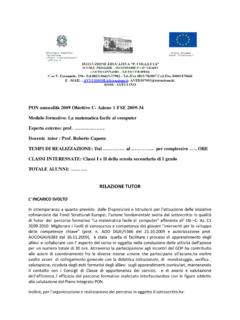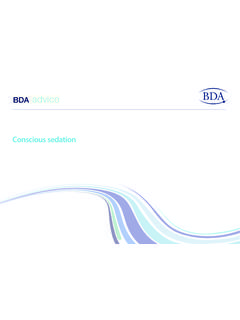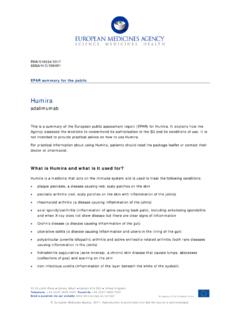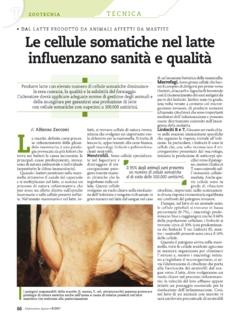Transcription of High Level Group on the Modernisation of Higher …
1 High Level Group on theModernisationof Higher EducationNew modes of learning and teaching in Higher educationREPORT TO THE EUROPEAN COMMISSION ONOCTOBER 2014 High Level Group on theModernisationof Higher EducationNew modes of learning and teaching in Higher educationREPORT TO THE EUROPEAN COMMISSION ONOCTOBER 2014 European CommissionReport to the European Commission onNew modes of learning and teaching in Higher educationOctober 2014 Luxembourg: Publications Offi ce of the European Union2014 68 pp. 17,5 x 25 cmISBN 978-92-79-39789-9 information on the European Union is availableon the internet: European Union, 2014 The content of this Report does not refl ect the offi cial opinionof the European Union. Responsibility for the information and views expressed in the publication lies entirely with the is authorised provided the source is acknowledgedPrinted in LuxembourgPrinted on elemental chlorine-free bleached paper (ECF) We need technology in every classroom and in every student and teacher s hand, because it is the pen and paper of our time, and it is the lens through which we experience much of our world.
2 David Warlick ..if we teach today as we taught yesterday, we rob our children of tomorrow. John Dewey|5||4|REPORT TO THE EUROPEAN COMMISSION ONNew modes of learning and teaching in Higher educationThe online and open education world is changing how education is resourced, delivered and taken up. Over the next 10 years, e-learning is project-ed to grow fi een-fold, accounting for 30% of all ed-ucational provision. But this transformation should be shaped by educators and policy-makers, rather than something that simply happens to them. And the ben-efi ts of these developments should be available to all Europeans. This is why, with my colleague Neelie Kroes, Commission Vice-President responsible for the Digital Agenda, we launched a joint initiative in 2013 on Open-ing Up Education, to set out a framework for enhancing learning and teaching through new technologies and open digital content at all levels of Higher education, new technologies have enormous potential to ef-fect change.
3 They enable universities to meet a broader range of learners needs, adapting traditional teaching methods and off ering a mix of face-to-face and online learning possibilities that allow individuals to learn an-ywhere, anytime. They also create openings to engage in new kinds of col-laboration and off er opportunities to distribute resources more eff ectively. Given the societal and economic potential that can come from harnessing technological innovation in Higher education, it is imperative that Europe takes the lead in this many universities are not yet ready for this change and govern-ments have been slow to take the lead. While there are instances of inno-vation, the landscape is fragmented, various barriers prevent widespread uptake, and fully-fl edged institutional or national strategies for adopting new modes of learning and teaching are few and far between. This is why, a er last year s successful report on Improving the quality of teaching and learning in Europe s Higher education institutions , I invited the High Level Group for the Modernisation of Higher Education to set out recommenda-tions on enhancing Higher education through new technologies.
4 Androulla VassiliouEuropean Commissioner for Education, Culture, Multilingualism and YouthI would like to thank the chair, Mary McAleese, and all the members of the High Level Group for the time, expertise and enthusiasm they have devoted to this issue. This balanced and incisive report shows clearly that Member States, supported by the European Union, have to act swi ly to set the right frameworks so Higher education institutions can make best use of the potential these new modes off er, enabling Eu-rope to become a global player in transformative Higher European Commission will play its part, off ering funding through the Erasmus+ programme to policy-makers and education providers to take forward the recommen-dations given by the Group . One recommendation that the European Commission has already put into practice: all educational materials supported by Erasmus+ are freely available to the public under open licences. We hope our good practice will be copied across our Union.
5 |6||7|REPORT TO THE EUROPEAN COMMISSION ONNew modes of learning and teaching in Higher educationA plethora of new terms have been making re-cent headlines in Higher education xMOOCs, cMOOCs, SPOCs, DOCCs .. with the promise, or threat, that digital technology will revolutionise our traditional, bricks and mortar universities. In a fast-changing discourse, even to cite these acronyms is to risk being out of date, and this was one of the challenges the High Level Group faced when tack-ling our second report on new modes of learning and teaching in Higher education keeping pace with de-velopments, without being derailed either by prophets of doom or purveyors of of this made the report a constantly moving target; now, we hope, we have nailed it down, taking not so much a snapshot as a freeze-frame of the Higher education landscape, and examining it long enough to detect the change that is happening, but also the resistance that may be slow-ing it down and the barriers that prevent exploration of the topic confi rmed that MOOCs and their cousins are only one part of a wave of innovation in Higher education, as blended learning or other forms of on- and off -campus learning take off.
6 These are multiplying the opportunities for learners at the same time as the latter s numbers, and kind, grow apace with Europe s need for a highly skilled, fl exible workforce. Nonetheless, this wave of innovation is pro-gressing at a very uneven pace across Europe, and we risk being le behind as other parts of the world act more nimbly in garnering the benefi ts of technology including by resourcing the teachers on whom successful adoption of technology pedagogy and curriculum design are matters for institutions, gov-ernments are responsible for defi ning the policy, legal and funding con-texts which impact on the motivation and ability of institutions to inte-grate new modes across Higher education provision. This is why we have sought, where possible, to direct our recommendations to policy-makers, and to urge strategic action to tackle the key challenges we identify: in-stigating an open culture for change; developing political and institution-Mary McAleeseChair of the EU High Level Group on the Modernisation of Higher Educational leadership; supporting digital skills for teachers and learners; and adapting fund-ing frameworks for targeted investment into new technologies and pedagogies, and quality assurance regimes that apply to onsite and online education.
7 We believe that Europe has a comparative advantage compared to other regions in the world. With our European Credit Transfer and Accumulation System (ECTS) we have a credit system recognised worldwide, that can be used for all forms of provision and help solve the knotty problems of certifi cation and recognition of online learning. Digital technology is an ally for Higher education. However, the latest developments concerning data protection and privacy issues have shown that technological advanc-es are not always used for educational goals. The High Level Group therefore wants to see the learner in the driver s seat when it comes to collecting, analysing and using data on his or her learning progression. I would like to thank all members of the Group and the support staff for their valua-ble contributions in the preparatory work, the discussions and in dra ing this report. My special thanks to all presenters to the Group (representatives from Member States, researchers, Higher education institutions applying new modes and other stakeholders) who shared with us their in-depth knowledge, gave wise and timely feed-back to our report and its recommendations, and helped us devise a pathway towards embedding new modes of learning and teaching at the core of European Higher education.
8 |8||9|REPORT TO THE EUROPEAN COMMISSION ONNew modes of learning and teaching in Higher educationExecutive summary 91. Introduction: why Europe needs to act 13 2. Harnessing new modes of learning and 17teaching to modernise Higher education 3. Challenges and how they can be addressed 234. Recommendations 535. Selective glossary of terminology 576. Acknowledgements 597. Members of the Group 63 Executive summary|11||10|EXECUTIVE SUMMARYREPORT TO THE EUROPEAN COMMISSION ONNew modes of learning and teaching in Higher educationThe Higher education landscape is undergoing signifi cant change as a result of technolog-ical innovations. We are witnessing changes in the way Higher education is taught and in the way students learn. While the conventional setting of the lecture hall will continue to form the bedrock of Higher education systems, it will be enhanced by the integration of new tools and pedagogies, and it will be complemented by many more online learning opportuni-ties and a greater variety of providers in Higher new technologies and approaches to education are already having a clear and positive impact on Higher education provision.
9 They can support eff orts within the Bologna Process and the European Union Modernisation Agenda to enhance the quality and extend the reach of Higher education across Europe. And they are already starting to facilitate better quality learning and teaching for both on-campus and online provision, as educational resources from around the globe become more freely accessible and more interactive media for learning are employed. Methods of teaching can be better tailored to individual students needs and ad-vances in learning analytics are enabling quicker feedback on students performance. There is enormous potential for widening access to Higher education and increasing the diver-sity of the student population. Online technologies provide opportunities to learn anywhere, anytime and from anyone. This fl exibility is essential for non-traditional learners and will enable a shi change in the engagement of Higher education institutions in lifelong learning and continuing professional development.
10 This will provide an important tool to governments in ensuring a diversity of provision within Higher education systems to meet the needs of all learners. It also provides a platform for reaching international markets and complements existing developments in cross-border , new technologies can facilitate greater collaboration, both with global partners and at a more local Level . Developing educational partnerships is an important element of Europe s strategy for cooperation with other parts of the world and also provides a mechanism for en-hancing educational attainment rates in emerging economies. At the local Level , technologies can underpin national eff orts to drive greater collaboration between institutions, combining expertise and delivering greater critical benefi ts are clear and Europe needs to take concerted action to ensure that the potential is fully realised. While the debate on digital learning has been dominated in recent times by the MOOC phenomenon, the impact of technology can and will be much wider.













